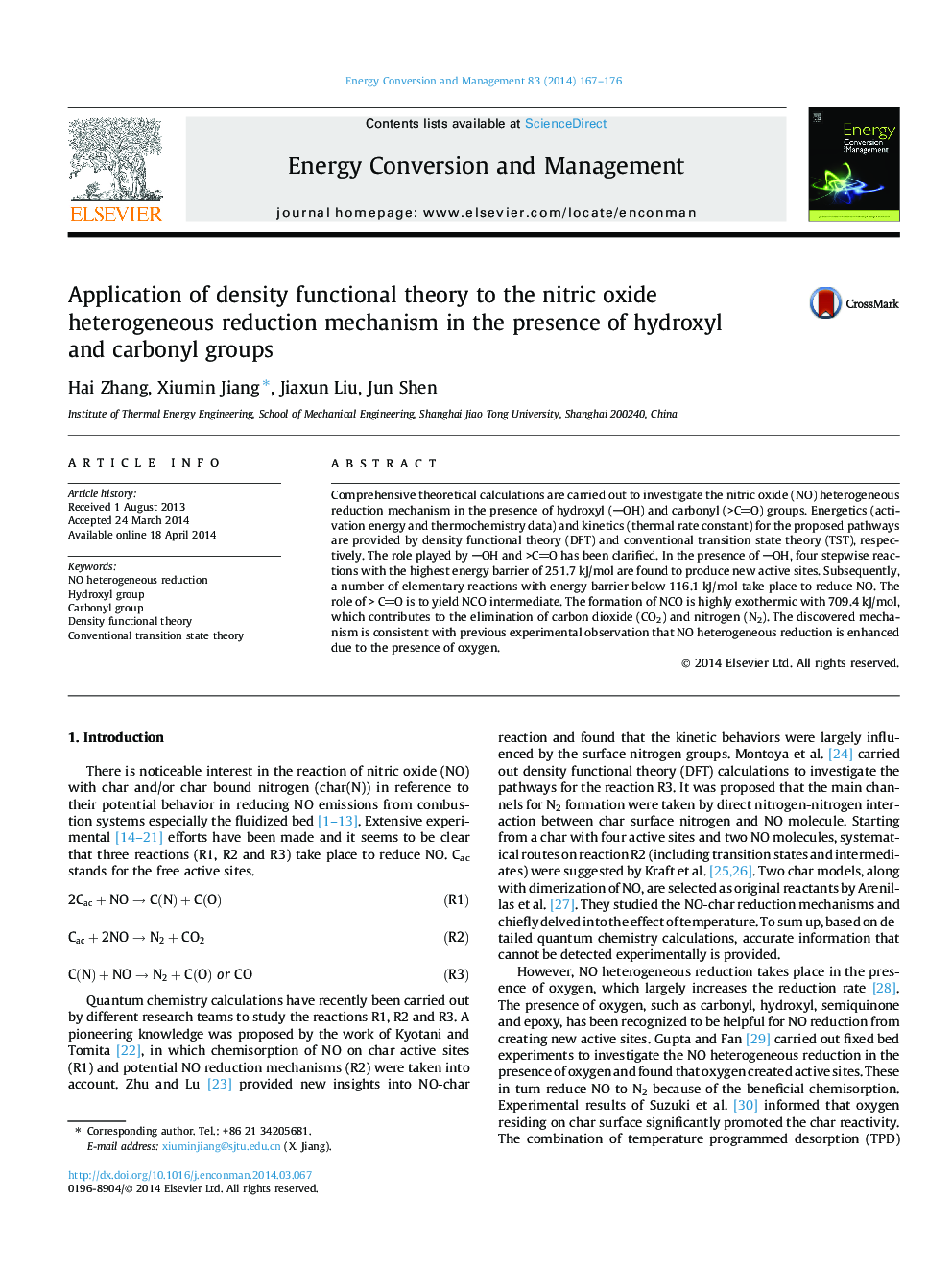| Article ID | Journal | Published Year | Pages | File Type |
|---|---|---|---|---|
| 7164874 | Energy Conversion and Management | 2014 | 10 Pages |
Abstract
Comprehensive theoretical calculations are carried out to investigate the nitric oxide (NO) heterogeneous reduction mechanism in the presence of hydroxyl (OH) and carbonyl (>CO) groups. Energetics (activation energy and thermochemistry data) and kinetics (thermal rate constant) for the proposed pathways are provided by density functional theory (DFT) and conventional transition state theory (TST), respectively. The role played by OH and >CO has been clarified. In the presence of OH, four stepwise reactions with the highest energy barrier of 251.7 kJ/mol are found to produce new active sites. Subsequently, a number of elementary reactions with energy barrier below 116.1 kJ/mol take place to reduce NO. The role of > CO is to yield NCO intermediate. The formation of NCO is highly exothermic with 709.4 kJ/mol, which contributes to the elimination of carbon dioxide (CO2) and nitrogen (N2). The discovered mechanism is consistent with previous experimental observation that NO heterogeneous reduction is enhanced due to the presence of oxygen.
Related Topics
Physical Sciences and Engineering
Energy
Energy (General)
Authors
Hai Zhang, Xiumin Jiang, Jiaxun Liu, Jun Shen,
